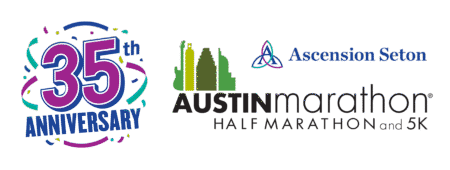Is There Really a Right Way to Run?
Go beyond the shoe and learn about the right way to run
Learning about the right way to run for yourself can make all the difference in the world. It can improve efficiency and reduce injury. RunLab’s, Dr. Kimberly Davis breaks down the myth and the reality about the right way to run. She includes reasoning and how you can learn more about your running form. If you want to learn more or have an injury looked at, give RunLab a call today!
by: Kimberly Davis, RunLab™
The Myth
There is a “right” way and a “wrong” way to run.
The Reality
There are many right and wrong ways to run, walk, and even squat. Your ideal way depends on your unique structure, range of motion, strengths, limiters, injury history, and goals. Seem like a lot to consider?! It is!
There are more runners and triathletes hitting the trails than ever and that, unfortunately, means more injury. Many studies estimate that upwards of 90% of runners will end up injured in any given year. Given the fact that millions upon millions of dollars have been spent on shoe design over the last 50 years, why are injury rates still the same, or even higher, than they ever were?
The answer? It’s not about the shoe.
Misinformation about running form
There is a lot of misinformation out there about running form. People constantly find their way into RunLab™ with stories about their struggles to “fix” their heel strike, run with higher cadence, get their “glutes to fire”, to “stop overpronating”, etc. But the problem lies in the fact that most of these runners have very little understanding of how their bodies are built. Despite their best intentions, they have even less idea why they are trying to change things, other than the fact that they read somewhere that what they are currently doing is “wrong.”
There are thousands of variables that go into a person’s ideal movement pattern. A person’s gait is as unique as their fingerprint! Furthermore, changing the way you move isn’t necessarily taking away the load. It simply means you are moving the load around to another area of the body that can be more, or sometimes less, equipped to handle that stress.
Movement analysis
This is where movement analysis comes into play and why it is vital to look at the full body both statically and in motion from multiple planes. It is important to understand the unique way you are built, your current range of motion, strengths and limiters, and the way your body has adapted to move through them.
Our brains are amazing at creating workarounds for even the slightest weakness. When we layer compensation pattern over compensation pattern (even as non-runners) for years, there is a lot that goes into unraveling the ball of biomechanical yarn. This is true for runners dealing with injury and uninjured runners looking to prevent injury or improve efficiency.
To illustrate the point, creating an increased range of motion in one area can create stability problems in another. This can cause that area to develop compensatory hypertonicity (tightness).
One common scenario we see in runners occurs when they have more flexible hamstrings than they think they do and constantly spend time stretching them, ignoring their hip flexors. Since most of us sit all day, the hip flexors can cause the pelvis to roll forward and pull on the (already flexible) hamstrings. This creates a perception of tightness which leads to, you guessed it, more stretching. Low back pain frequently results. This is one of a million examples but illustrates the way the body adapts and why we end up chasing pain in the wrong places for years if we don’t understand our unique underlying biomechanical picture.
Take-home message
If you don’t understand your unique structure, range-of-motion, strengths, and limiters, it is very easy to get pulled down the rabbit hole by the mountain of information from articles, underqualified “experts,” wearable technology, and your running friends who “read somewhere that you should run with your feet facing forward.”
Understanding your body should be the springboard to any good training plan and is vital to preventing injury. More importantly, this information arms you with the knowledge to decide which recommendations for “better form” are actually relevant to you.
And remember, shoes matter. But there isn’t a shoe in the world that can replace working on your biomechanics. The right shoes will aid your body’s ability to move naturally and as efficiently as it can in its current state. However, no amount of shoe technology can permanently solve for a weakness in the body.






